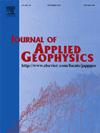Dynamic response of a circular lined tunnel and type-III crack in the presence of a semicircular canyon embedded in an anisotropic half-space subjected to SH wave
IF 2.2
3区 地球科学
Q2 GEOSCIENCES, MULTIDISCIPLINARY
引用次数: 0
Abstract
In this study, the dynamic interactions between a surface semicircular canyon in an anisotropic geology and a circular lined tunnel and type-III crack buried at an arbitrary location below under the excitation of anti-plane shear horizontal (SH) waves are investigated. The wave fields and the stress fields in the half-space are efficiently constructed using the wave function expansion method, the complex function method and the mirror image method. The scattered waves generated by crack are constructed based on Green function and “crack cutting” technique. The position correction coefficient is introduced in practical applications, which perfectly solves the problem of mirror asymmetry of the scattered wave field in a half-space anisotropic medium. And deriving the surface displacement amplitude (|W|) containing the semicircular canyon, the dynamic stress concentration factor (DSCF) along the tunnel boundary and the dynamic stress intensity factor (DSIF) at the tip of the crack. The correctness of the method is verified by degenerating it to a classical analytical solution. Finally, the effects of the anisotropic strength of the geology, the tunnel size and the location of the fissure as well as the incident angle and wave number of the SH wave on the |W|, DSCF and DSIF are analyzed by numerical calculations in both the frequency and time domains. The results show that the anisotropic strength of the geology and the surrounding media defects have a large influence on the dynamic response of both surface and subsurface structures, and that sufficient attention should be paid to the development and design of near-surface tunnels in canyon or basin terrain.
求助全文
约1分钟内获得全文
求助全文
来源期刊

Journal of Applied Geophysics
地学-地球科学综合
CiteScore
3.60
自引率
10.00%
发文量
274
审稿时长
4 months
期刊介绍:
The Journal of Applied Geophysics with its key objective of responding to pertinent and timely needs, places particular emphasis on methodological developments and innovative applications of geophysical techniques for addressing environmental, engineering, and hydrological problems. Related topical research in exploration geophysics and in soil and rock physics is also covered by the Journal of Applied Geophysics.
 求助内容:
求助内容: 应助结果提醒方式:
应助结果提醒方式:


